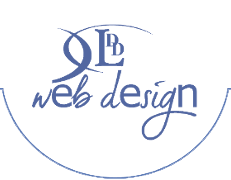10 Part Informational Series -WordPress as a Content Management System
WordPress is one of the worlds most popular content management systems (CMS) and is an elegant, well-architectured personal publishing system. Whether you intend to keep up with your website updates and changes or hire a website maintenance team, WordPress is the perfect choice for an easy to use and maintain Content Management System.
We hope that the following series of articles will provide valuable tips and insight into this powerful web publishing and development tool.
 WordPress websites have become synonymous with blogs. WordPress is one of the largest blogging tools in the world according to WordPress.org. What you may not know is that it’s not just another pretty blog. You can use WordPress for regular websites and even corporate websites.
WordPress websites have become synonymous with blogs. WordPress is one of the largest blogging tools in the world according to WordPress.org. What you may not know is that it’s not just another pretty blog. You can use WordPress for regular websites and even corporate websites.
You don’t have to write a single blog-type post to have a fully functional website. WordPress websites have pages just as a regular website would. You can get rid of blog-like features such as archives and tag clouds. You can even name your website pages just as you would with standard HTML. The trick is to learn a few WordPress basics.
Choosing the right template for your WordPress website
First and foremost you must choose a website template that supports pages as well as categories. Study the theme previews and look for Home and About. These generally show you how the website theme treats web pages. Are they across the top or down the side in the sidebar? Move your mouse over each menu item and see if it offers sub-menus for that item.
Then look in the sidebar of the preview for categories. If it’s there then you’re in business. This theme can support a standard website.
Once you’ve found a website theme you like that lists pages and categories in a way that suits you, the next step is to plan your website content. Pages can be used for basic company information. For example, you could have an About page, Contact Us, Pricing, Photo Gallery, etc. across the top of the website.
Posts and categories can be used for product information and lists. Using categories gives you the benefit of having a built-in table of contents in the sidebar of your website if your chosen theme puts the categories there.
Using WordPress Categories to create navigation menus
 First create all of your categories keeping in mind that this will create the table of contents in your sidebar. Note that some themes put pages in the sidebar and categories at the top. Categories are created in your WordPress administration panel under “Posts.”
First create all of your categories keeping in mind that this will create the table of contents in your sidebar. Note that some themes put pages in the sidebar and categories at the top. Categories are created in your WordPress administration panel under “Posts.”
If the website is for an appliance business, categories might include Kitchen Appliances, Small Appliances and Outdoor Appliances for example. A pet store might have categories such as Dogs, Cats and Fish.
The next step is to create sub-categories for each category in the form of posts. For example you could have posts entitled: German Shepherds, Greyhounds, and Beagles under the Dogs category. Each post is treated as a sub-category creating a detailed table of contents for your website.
Alternately, you could actually create sub-categories for each category and then write a single post for each sub-category. The end result is a website that looks and feels like any other website.
Customizing your WordPress Theme
 You can even edit the image files that make up your WordPress website. Look in your website’s theme folder for an “images” folder. You can edit those images as long as you don’t change the size and shape. Don’t trim or crop the images or move any components. The website layout relies on the images being exactly as you see them. However, you can change the color, add a logo or other graphics to customize the images. You can even edit the CSS files to change background color, link color and text color.
You can even edit the image files that make up your WordPress website. Look in your website’s theme folder for an “images” folder. You can edit those images as long as you don’t change the size and shape. Don’t trim or crop the images or move any components. The website layout relies on the images being exactly as you see them. However, you can change the color, add a logo or other graphics to customize the images. You can even edit the CSS files to change background color, link color and text color.
The tricky part of working with a WordPress website are the parts of the website that give it a blog-like appearance such as archives and references to comments. These can be removed with various WordPress plugins which you can find at WordPress.org under “Extend/Plugins.” Try searching the plugin directory for items such as: remove archives, remove comments, custom widgets, remove widgets, delete archives, and so forth.
You can also edit the PHP files that come with your website to remove the offending segments. Make a copy of the file before you edit it so that if you mess up, you can reinstall the original.
If you familiarize yourself with the anatomy of a WordPress website and how to edit the various pieces, you can create a website that rivals any standard website. Since WordPress is free, you’ve got nothing to lose for trying it.


Add Your Review